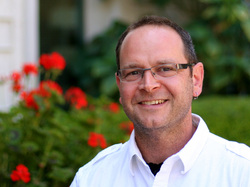Species distribution data provide the foundation for a wide range of ecological research studies and conservation management decisions. Two major efforts to provide marine species distributions at a global scale are the International Union for Conservation of Nature (IUCN), which provides expert-generated range maps that outline the complete extent of a species’ distribution; and AquaMaps, which provides model-generated species distribution maps that predict areas occupied by the species. Together these databases represent 24,586 species (93.1% within AquaMaps, 16.4% within IUCN), with only 2,330 shared species. Differences in intent and methodology can result in very different predictions of species distributions, which bear important implications for scientists and decision makers who rely upon these datasets when conducting research or informing conservation policy and management actions. We illustrate the scientific and management implications of these tradeoffs by repeating a global analysis of gaps in coverage of marine protected areas, and find significantly different results depending on how the two datasets are used. By highlighting tradeoffs between the two datasets, we hope to encourage increased collaboration between taxa experts and large scale species distribution modeling efforts to further improve these foundational datasets, helping to better inform science and policy recommendations around understanding, managing, and protecting marine biodiversity.
You can explore an interactive web app of our results here: http://ohi-science.nceas.ucsb.edu/plos_marine_rangemaps/
Speaker: Casey O’Hara
Casey is a Researcher at NCEAS with the Ocean Health Index project as well as an educator, environmentalist, engineer, and musician. He studied climate change adaptation and mitigation, coastal marine resources, and environmental communication at UCSB’s Bren School and received his Master’s degree in 2014. Long prior to Bren, he earned a B.S. and M.S. in Mechanical Engineering from Stanford in 1994.

